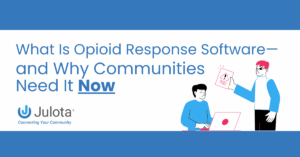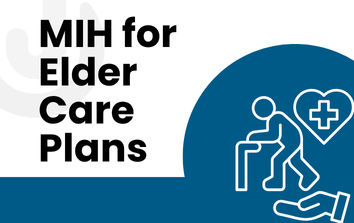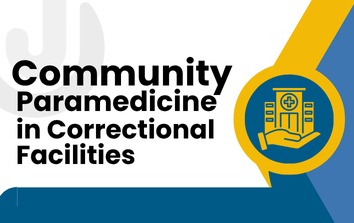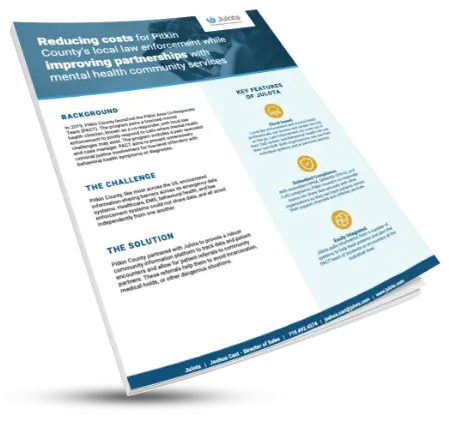Opioid response software has changed how communities respond to (and prevent) overdoses. Here you’ll learn the reasons why we need more opioid response data, and how specialized software can change the game.
Opioid response software acts as the headquarters or command center for a community’s battle against substance abuse disorders and drug overdoses. It can track your team’s response to calls related to substance abuse, allow team members to safely share key information, and offer a simple way to consolidate essential data. 
How Opioid Response Software Helps Fight Overdoses and Drug Addiction
Throughout history, when you look at some of the most significant battles waged, from ancient times to modern day, you’ll find two common pillars of success: Intelligence and communication. To overcome a common enemy, we gain an advantage if we have advanced knowledge (intelligence data) and good coordination among our team (communication).
And so this brings us to the war against overdoses and the debilitating impact of drug addiction on a community.
As you’ll see in this guide, opioid response software is critical to the success of your team’s battle against the negative effects of overdose and addiction. Here are the main pain points opioid response software addresses:
- Communities need to know who is overdosing
- Communities need to know where overdoses are happening
- Communities need to bring more staff on board
- Communities need adequate prevention tactics
- Communities need a collective response
Below, we’ll get into all the details and nuances.
Opioid Response Software Helps Communities Know Who is Overdosing
To deliver the best help, we need to know who is struggling the most with opioid-related issues. Opioid response software can create a database where responders and public health members can go to see who needs the most assistance and to track any changes.
If you don’t measure it, it’s tough to improve it. This is true for just about anything, and it’s definitely true for the wider opioid response. Not only will software help you measure what you’re doing, but it will also help you prove what you’re doing.
And while this might not seem like a big deal, the ability to prove that what you’re doing works is critical when it comes to creating new partnerships and looking around for areas of potential funding. Put simply, people want to give their money to a program that works, not a program that might work or could work.
Opioid response software enables you to track your teams’ performance in the field and view the treatments they provide, along with their corresponding outcomes.
Opioid Response Software Can Identify Where ODs Occur
Not only do communities need to know who is impacted by overdoses, but they also need to know where these overdoses are primarily occurring. This is important for many reasons, and most of them have to do with the dispatching of resources.
For example, if you’re building a team to respond to overdoses or those who are struggling with addiction, you wouldn’t want to send all your resources to an area where the overdoses aren’t occurring. Furthermore, it’s important to avoid guesswork when deciding where to deploy resources, as this can open the door for preconceived outcomes to take hold.
Overdoses and drug addiction impact all levels of society and all demographics. If resources are only deployed to a given population because communities assume that they will be the most affected, that leaves entire groups of people without care.
That’s what Opioid response software helps correct – wasted time when deploying resources. When good software platforms are implemented, communities can ensure that nobody is left without the ability to seek help.
Opioid Response Software Helps Communities Bring The Right Staff On Board
Opioid response software can also assist in finding the right staff for the job. This task requires digging a little bit deeper into the data, but that’s what good software will let you do.
Let’s look at an example. A community wants to help people struggling with heroin addiction. To best do this, they must understand this group of people as best as they possibly can, and that means looking at all their needs (not just their struggle with addiction).
If, after looking at the data, a community outreach team finds that people with opiate addiction often also struggle with housing and stable food, then they can take steps to bring people on board who can assist with those needs. They may be able to staff a social worker or a mental health professional. In this way, the person struggling with drug abuse receives three-dimensional care that hopefully gives them the best chance of recovery.
All this is not possible without good data and careful coordination among team members. Opioid response software enables teams to view the entire picture of an individual struggling, allowing them to adapt to their specific needs.
You can’t help someone decorate their living room if their house is on fire. Too often, health systems overlook the factors in a person’s life that hinder true healing. The reasons that aspects of a person’s health are overlooked are many (time constraints, money, staffing), but that doesn’t mean that the best effort possible shouldn’t be put forth.
Opioid response software is the wide-angle lens that allows responders to see the true scope of what they are dealing with.
If you haven’t already, have a look at our guide to navigating social determinants of health with community paramedicine. The same data collection principles apply to opioid response software.
Opioid Response Software Creates Room for Prevention Tactics
The holy grail of medicine is not that you’ve solved how to treat a disease; it’s solving how to prevent it from ever happening in the first place. Now, with that being said, treatments are great, and we know that, practically speaking, good treatments are necessary for things like heart disease, stroke, and cancer. In such a vast population, these things are inevitable.
With that said, many health systems seem to become so fixated on treatment that they forget to look at prevention. In chronic diseases, prevention can be complicated, as you are dealing with many genetic as well as environmental factors that are hard to control.
With opioid addiction and substance use, prevention is a challenge, but it is possible. Communities can use opioid response software to identify individuals at the highest risk and respond accordingly.
Take a college campus as an example. If the data shows that there has been a rise in overdoses at a particular college campus, the community health team could take action in order to prevent others from overdosing.
This action could mean raising awareness about what is happening in the area, providing training on what to do if they find someone who has overdosed, and training on how to access and administer Narcan. These kinds of preventative initiatives are possible and can ultimately save lives.
However, if a community fails to have good data on the opioid situation within their community, they are going to suffer from the inability to respond. In healthcare, a lack of data is the equivalent of a fighter pilot losing all radars and visibility.
Opioid Response Software Allows for a Collective Community Response
If your community has not been collecting data related to overdoses and opioid use, there’s no better time to start than today. Consider Julota’s health tracking tools that allow teams to collect, view, and safely share information on Opioid response.
Having good software tools ties your organization together and allows you to share critical information with other departments. It’s not enough for just the police department to have Opioid Software, or just the Public Health Department – everyone who will be responding to or managing any aspect of opioid or substance use response needs to have access to this data.
Julota’s software provides an interoperable solution that keeps your data safe and provides the command center you need to evaluate and distribute resources in the fight against addiction and overdose deaths.
Key Notes: Why Opioid Response Software is So Important for Your Area
Opioid response software is all about increasing your community’s awareness of what’s going on around them. The areas that don’t use any kind of opioid overdose tracking will be severely limited in their ability to respond to and prevent deaths and disabilities related to substance use.
Opioid response software tells your team who is struggling, where they are, and some of the co-morbidities they may have that need to be addressed. When communities use a strong Opioid Software Response platform, they can be sure they are responding to one of our nation’s biggest threats with both eyes open.
Contact Julota to learn how their software can help your area track and manage opioid related incidents.




